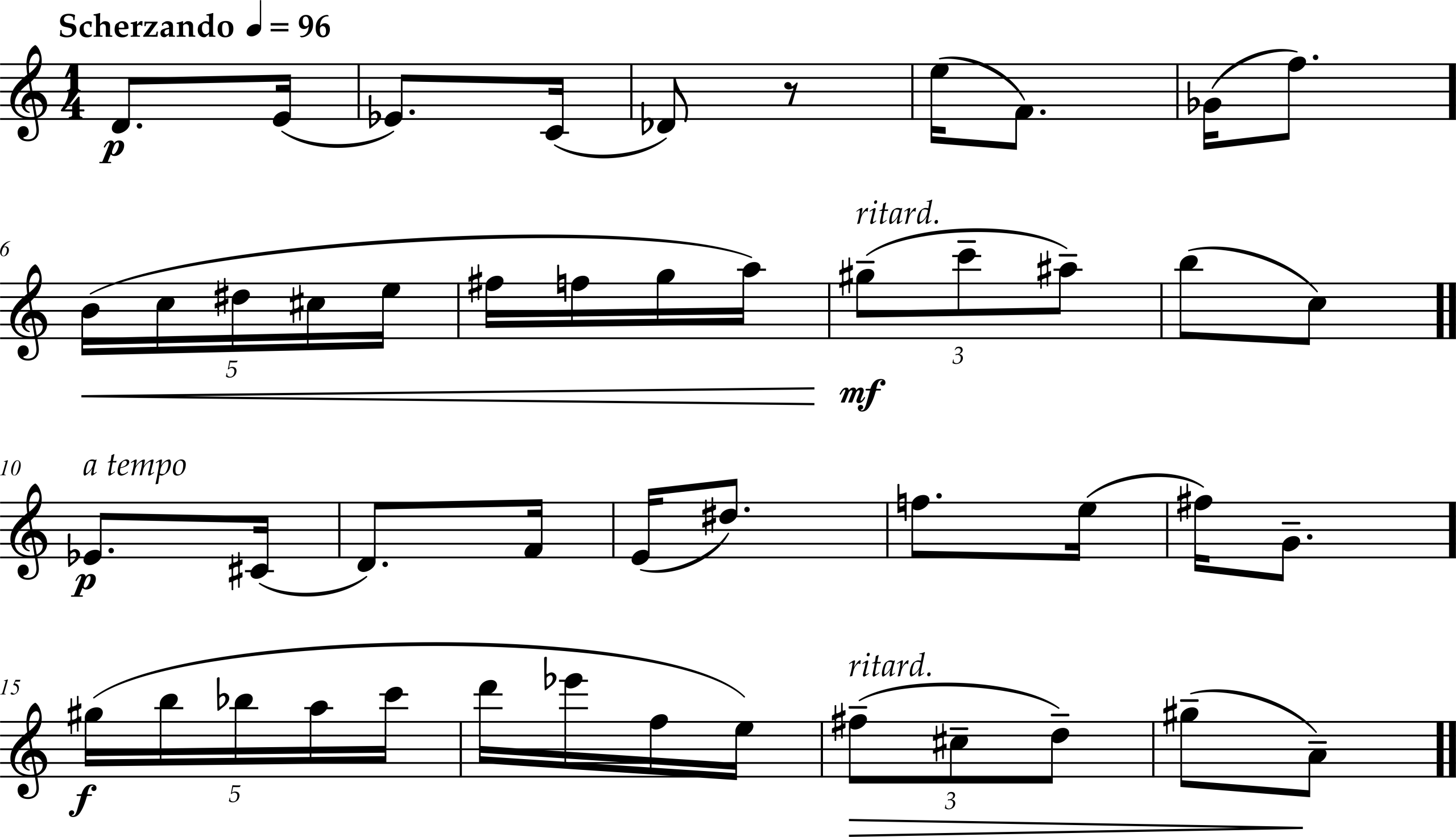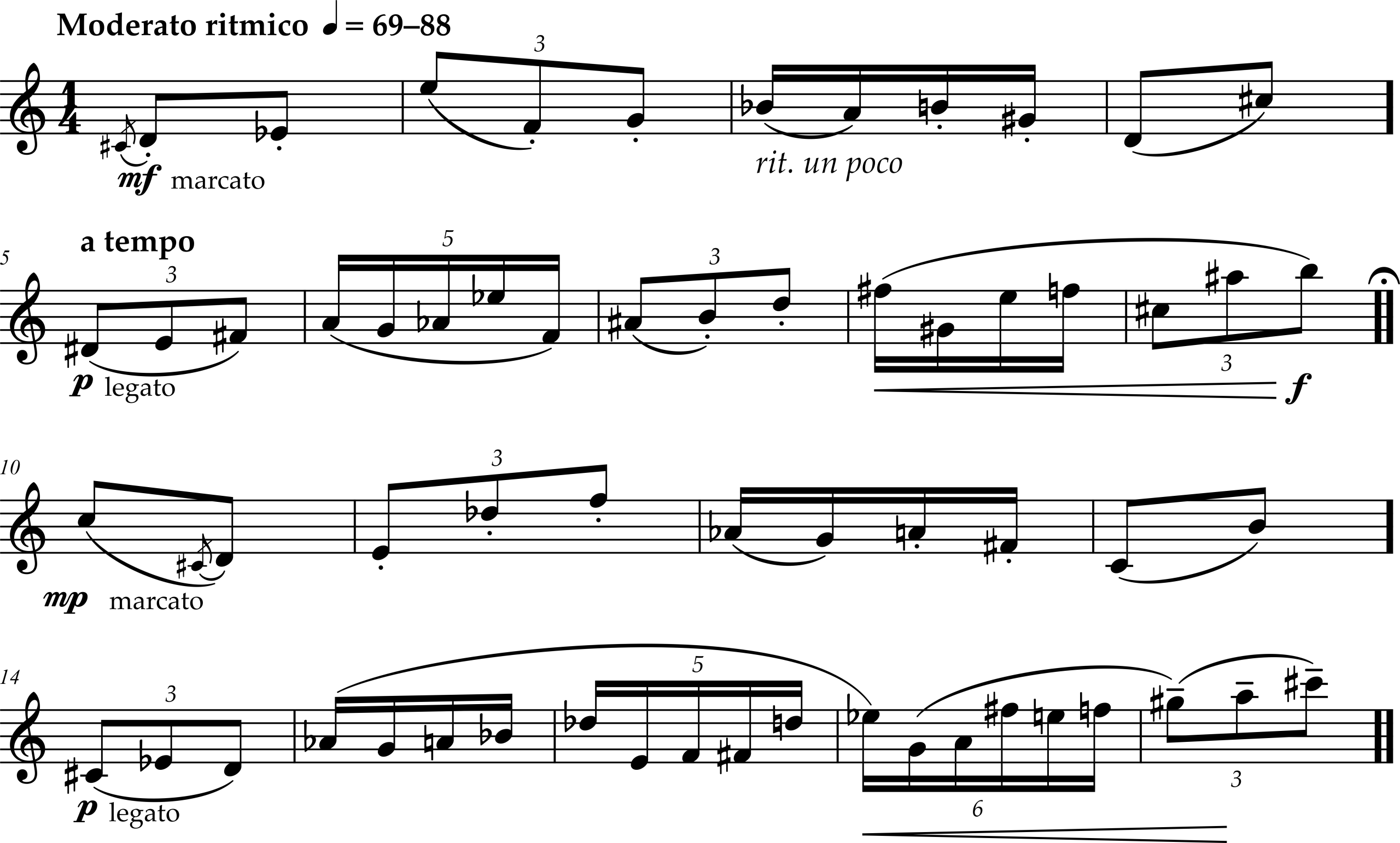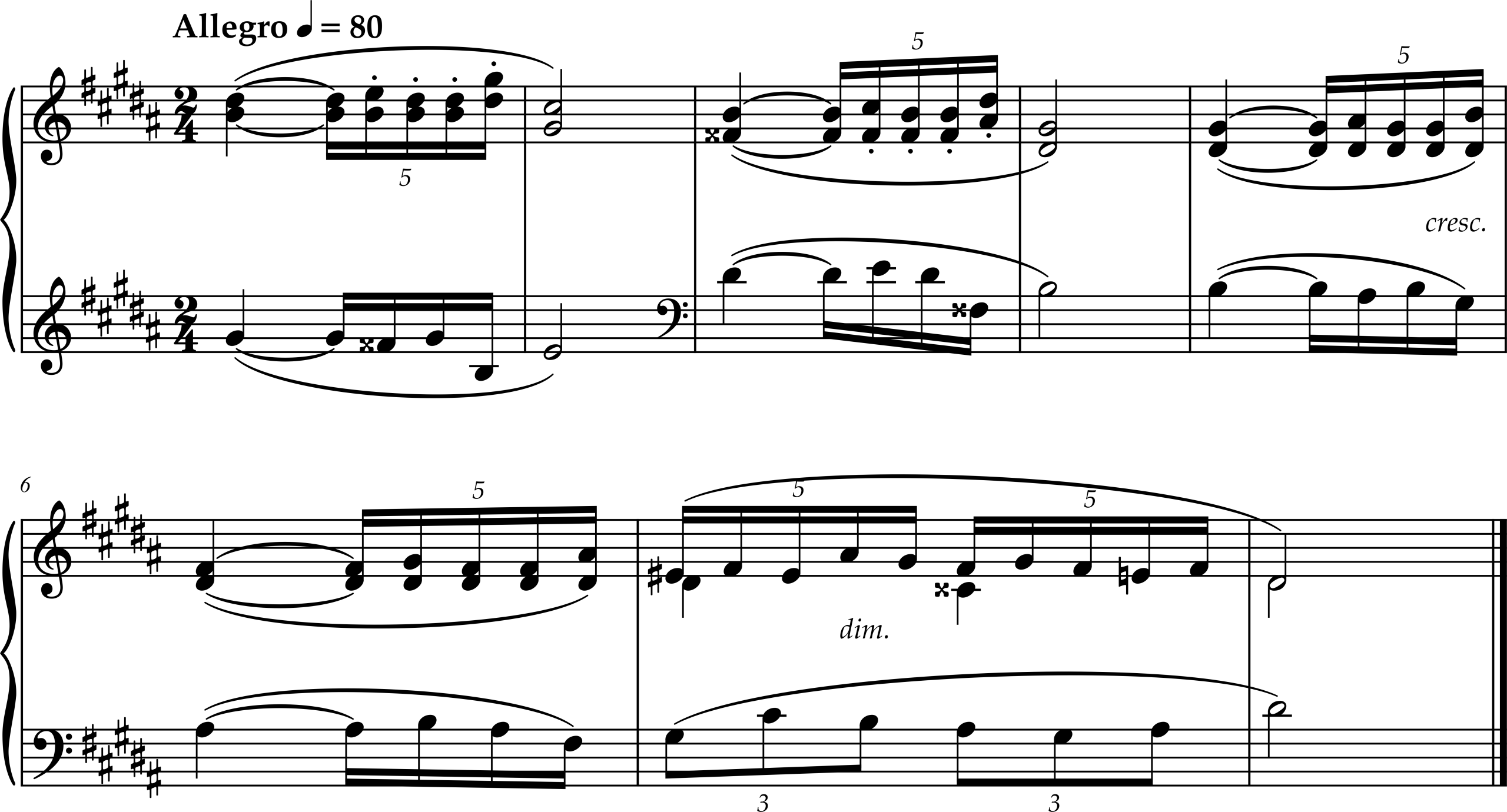A. Beat-Level Quintuplets
Single-Line Exercises
Exercises 9A-1 through 9A-3 mix quintuples with other divisions of the beat.
Exercise 9A-4 demonstrates quintuplets at the level of a subdivision of the main beat. This case is included here because it involves the same basic skill as performing beat-level quintuplets.
Exercise 9A-1: Ruth Crawford, Diaphonic Suite for Flute (or Oboe), Movement 1

Exercise 9A-2: Ruth Crawford, Diaphonic Suite for Flute (or Oboe), Movement 4

Exercise 9A-3: Alexander Scriabin, Prelude for Piano, Opus 16, Number 3

Exercise 9A-4: Claude Debussy, Sonata for Flute, Viola, and Harp, Movement 1, Pastorale

Two-Part Exercise
Exercise 9A-5 features quintuplets superimposed against sixteenths (five-against-four) and triplets (five-against-three). It should be practiced both as a duet and as an individual two-part exercise.
For accurate five-against-four, start by establishing an even five-against-two pattern, in this case quintuplet sixteenth notes against eighth notes. To accomplish this, return to the exercise described in the Introduction, and tap eighth notes while vocalizing the different subdivisions.
Then, subdivide the tapped eighth notes into sixteenth notes, similar to how quadruplets were approached in the previous chapter. This will result in the desired five-against-four pattern.
There is no equivalent approach for five-against-three, which has to be learned as-is. We recommend omitting the ties at first, incorporating them back in only once all of the beat subdivisions can be performed accurately.
Exercise 9A-5: Alexander Scriabin, Prelude for Piano, Opus 16, Number 2


